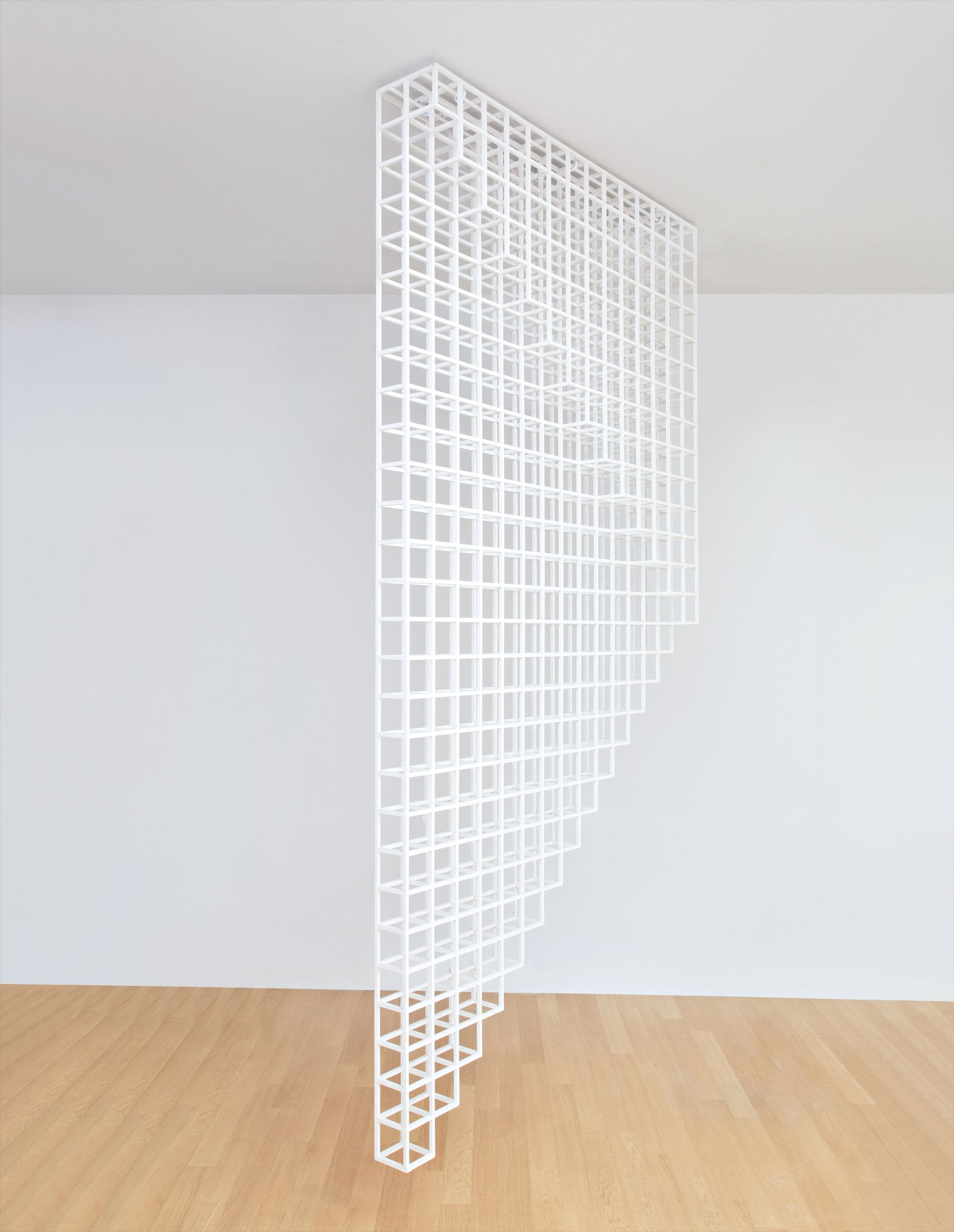

40
Sol LeWitt
Hanging Structure 28 B
Full-Cataloguing
SOL LeWITT, 1967
Executed in 1989, Hanging structure 28 B comprises ninety-one cubic forms, symmetrically arranged to form a larger structure through repetition of the basic unit, resulting in the creation of a space within a space. Here, the basic unit, the cube, is as the artist has said, “deliberately uninteresting”.
Sol LeWitt, a pioneer and one of the most prominent figures of both Minimalist and Conceptualist art, made his first modular cube structure in 1965. The present lot epitomizes the simplicity of form that the artist was trying to achieve, giving greater importance to the ideas and concepts informing the work than the actual object itself: “What the work of art looks like isn’t too important. It has to look like something if it has physical form. No matter what form it may finally have it must begin with an idea. It is the process of conception and realization with which the artist is concerned.” (Sol LeWitt, “Paragraphs on Conceptual Art”, Artforum, vol. 5, no. 10, 1967, pp. 79-83)
Having first developed the grid aesthetic in the early 1960’s, LeWitt demonstrates in the present lot the endurance of his investigation into the themes that would ultimately define his career—namely the invention of minimalist objecthood and a deep meditation on logic and its self-forming systems. The artist’s tendency to present geometric progressions as they exist in concrete reality, coupled with an aesthetic that has been described as deceptively simple, has captivated viewers for decades despite the typically ephemeral nature of artistic movements in the twentieth century. It is ultimately LeWitt’s irrefutable commitment to discipline that has marked his claim to modernity.
Sol LeWitt
American | B. 1928 D. 2007Connected to the Conceptual and Minimalist art movements of the 1960s and '70s, the artist and theorist Sol LeWitt was a pivotal figure in driving 'idea' art into the mainstream art discourse. Redefining what constituted a work of art and its genesis, LeWitt explored these ideas through wall drawings, paintings, sculptures, works on paper and prints.
Using a prescription to direct the creation of a work, the artist’s hand subordinated to the artist's thoughts, in direct contrast to the Abstract Expressionist movement earlier in the century. Actions, forms and adjectives were broken down into terms, serially repeated and reconfigured: grids, lines, shapes, color, directions and starting points are several examples. These directives and constructs fueled an influential career of vast variety, subtlety and progression.